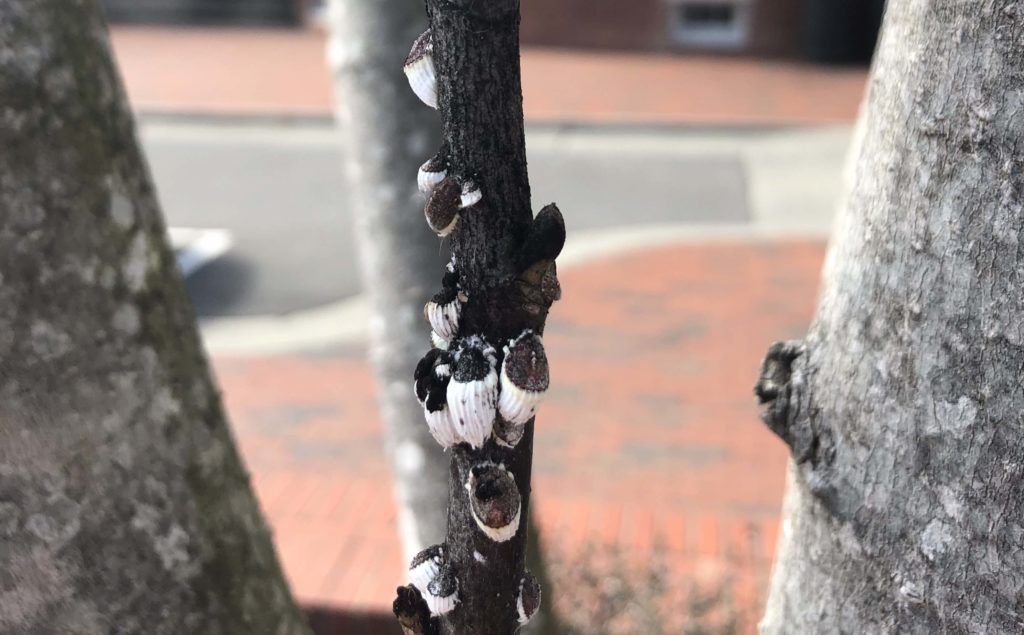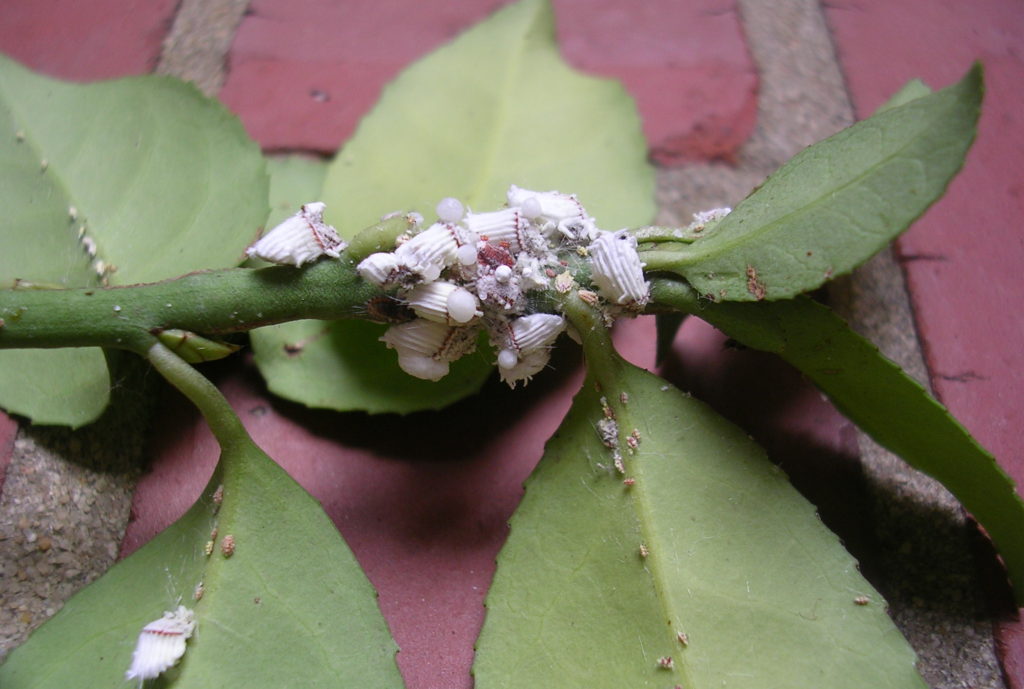Watch for Cottony Cushion Scales
go.ncsu.edu/readext?588635
en Español / em Português
El inglés es el idioma de control de esta página. En la medida en que haya algún conflicto entre la traducción al inglés y la traducción, el inglés prevalece.
Al hacer clic en el enlace de traducción se activa un servicio de traducción gratuito para convertir la página al español. Al igual que con cualquier traducción por Internet, la conversión no es sensible al contexto y puede que no traduzca el texto en su significado original. NC State Extension no garantiza la exactitud del texto traducido. Por favor, tenga en cuenta que algunas aplicaciones y/o servicios pueden no funcionar como se espera cuando se traducen.
Português
Inglês é o idioma de controle desta página. Na medida que haja algum conflito entre o texto original em Inglês e a tradução, o Inglês prevalece.
Ao clicar no link de tradução, um serviço gratuito de tradução será ativado para converter a página para o Português. Como em qualquer tradução pela internet, a conversão não é sensivel ao contexto e pode não ocorrer a tradução para o significado orginal. O serviço de Extensão da Carolina do Norte (NC State Extension) não garante a exatidão do texto traduzido. Por favor, observe que algumas funções ou serviços podem não funcionar como esperado após a tradução.
English
English is the controlling language of this page. To the extent there is any conflict between the English text and the translation, English controls.
Clicking on the translation link activates a free translation service to convert the page to Spanish. As with any Internet translation, the conversion is not context-sensitive and may not translate the text to its original meaning. NC State Extension does not guarantee the accuracy of the translated text. Please note that some applications and/or services may not function as expected when translated.
Collapse ▲Cottony cushion scale is an exotic pest that has been in the US for over a century. Initially a pest of citrus in California cottony cushion scale is now a pest of many crops including ornamentals throughout the southern US. It is quite generalist and feeds on many ornamental plants such as Nandina, Euonymus, Boxwood, Rose, and others. Today I went out looking for tulip tree scales on magnolias and instead found a severe cottony cushion scale infestation.
Cottony cushion scale is very noticeable when the white cottony female egg sacs are present. They are present now and most of the year since there are several overlapping generations per year. These are in a different family (Mararodidae)than other soft scales (Coccidae) and should not be confused with other cottony scales like cottony maple leaf scale, cottony camilla scale, or oak erriococid scale which is also in a different family (Eriococcidae).
Many products are available to help manage soft scales and scales in general. A good place to start is with horticultural oil or insecticidal soaps. You can read about scale management with oils and soaps in a recent article. Other products are listed in the 2017 Southeastern US Pest Control Guide for Nursery Crops and Landscape Plantings.




